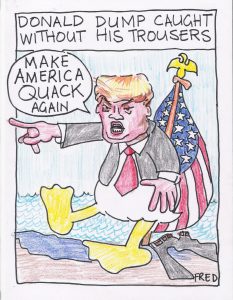“Citizens of nowhere,” the millisphere of London post-Brexit.
Millisphere, n. a discrete region populated by roughly one thousandth of the total world population; a bit over seven million people (but anywhere between 3.5 and 14million will do); a lens through which to study human geography.
Two of our friends who live and work in London were visiting Wanganui last week and I was interested to quiz them about London post-Brexit.
London, along with Scotland and Northern Ireland, voted in the 2016 referendum to stay in the EU, while almost all the rest of the UK voted to leave.
“I remember the night it happened, it was so negative and depressing,” said Jocelyn who teaches at the Camberwell School of Art. “ At work the next morning the students were in tears, I had to take them all out for a cup of tea, it cost me a lot of money,” she recalled.
Change would be dramatic she thought, for example, in terms of fees, her EU students would now be seen as “foreign students” not “home students” anymore. “It will take a lot of intellectual effort to untangle from all sorts of areas.”
Of the 8.5 million people living in Greater London almost one million of them are from the EU and don’t have British passports.
“We are living through the death-knell of Great Britain,” said Celia who once worked at Whanganui’s Sarjeant Gallery and now works at the Tate Modern. “It’s going to be pretty tough, I think they will lose Scotland in the end.”
“London is a very tolerant city, and very mixed, on the number twelve, which is my bus, they’d think I was the only English person, and I’m not,” Jocelyn observed. “My co-worker is Greek with two children born in London, but didn’t have a British passport, which costs a thousand pounds, therefore she couldn’t vote in the referendum, people are already getting letters telling them to prepare to go home.”
London’s status as a global financial hub can no longer be guaranteed.
HSBC is planning to move a thousand workers to Paris over the next two years and Lloyds of London has announced setting up a new European base to retain privileged access to the single European market. On the other hand Google, Apple, Facebook and Snapchat are setting up offices in
London.
Sadiq Khan, the Moslem mayor of London, at Davos this year, has warned that a “hard Brexit” won’t necessarily benefit European financial centres like Paris, Berlin and Frankfurt but rather will benefit global centres like Hong Kong, Singapore and New York.
Journalists living in “university, internet and travel bubbles” and looking at the UK through a “London lens” didn’t see Brexit coming. Elite Londoners saw themselves as “citizens of the world.” British nationalists called them “citizens of nowhere.”
Brexit has unearthed a polarisation in the UK along the lines of age, education, class and geography. Between those who were able to move freely and embraced globalisation versus those dissatisfied with the political establishment and saw the future with fear and alienation. Between those caught up in lower wages and rising house prices since the 2008 financial crisis versus the financial elite who mostly came out of crisis richer than when they went in.
Jocelyn and Celia still maintain a home in Castlecliff and call Whanganui a “relaxed and lovely” place. For all its faults they still find London “staggering” with “layers and layers and layers of meaning and opportunity” for those working in the arts.
What attracts them to London is that it is open and tolerant, that there is interaction across diverse communities, and continues to attract the “Dick Whittingtons” of the world, although, these days, young New Zealanders are more likely to do their OE in Berlin (where it is cheaper to live) than in Earls Court, where their parents did their OE.
They are concerned with the rise of the right and nationalism and xenophobia in the UK. “The frightening thing is that Teresa May looks like Margaret Thatcher and Boris Johnson looks like Donald Trump,” they agreed.
“One of the pleasures of living in London is taking the train out into the surrounding countryside to look at the stunning English landscape,” said Jocelyn. “A landscape maintained with EU subsidies,” added Celia, and they both laughed.
London, which has traditionally been open to foreign immigrants, which needs them both to do the work that the British won’t do, as well as for skilled workers in the finance, technology and pharmaceutical sectors, voted to remain in the EU. On the other hand regional Britain where immigrants generally don’t go, voted to cut the ties with the EU and send foreign workers back home.

 Millisphere, n. a discrete region populated by roughly one thousandth of the total world population; a bit over seven million people (but anywhere between 3.5 and 14million will do); a lens through which to study human geography.
Millisphere, n. a discrete region populated by roughly one thousandth of the total world population; a bit over seven million people (but anywhere between 3.5 and 14million will do); a lens through which to study human geography.